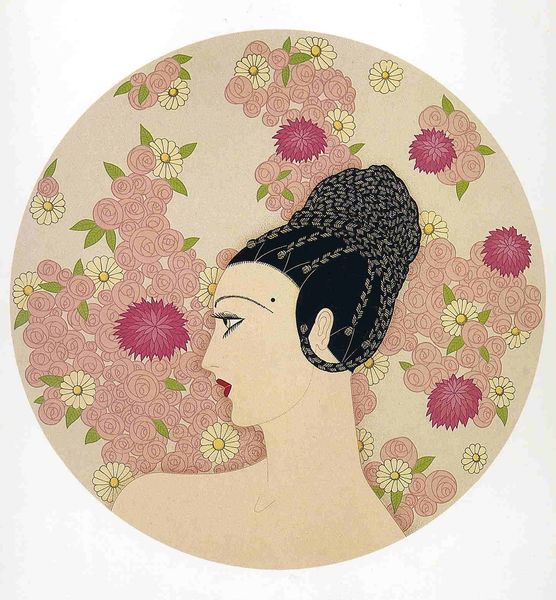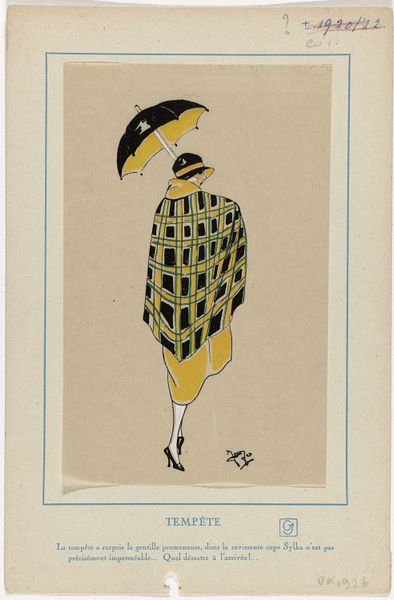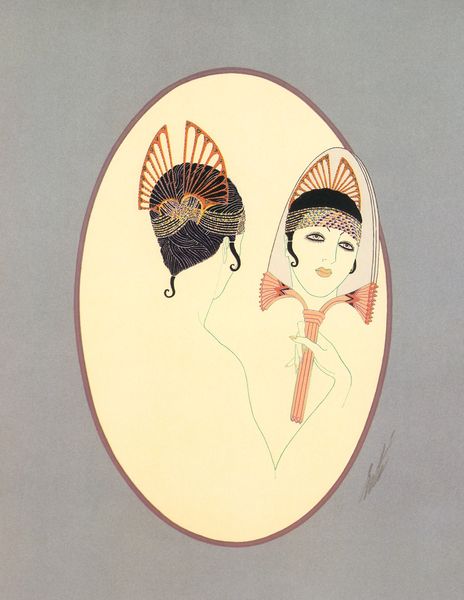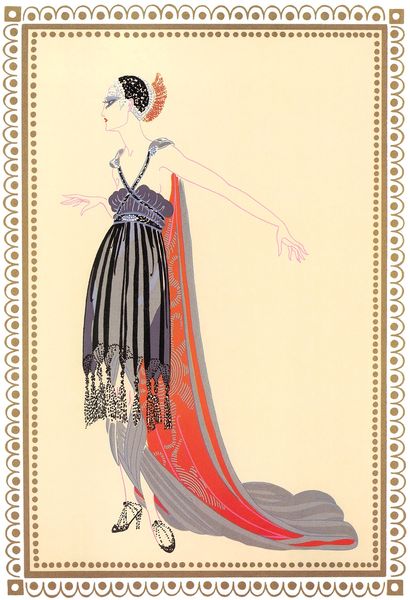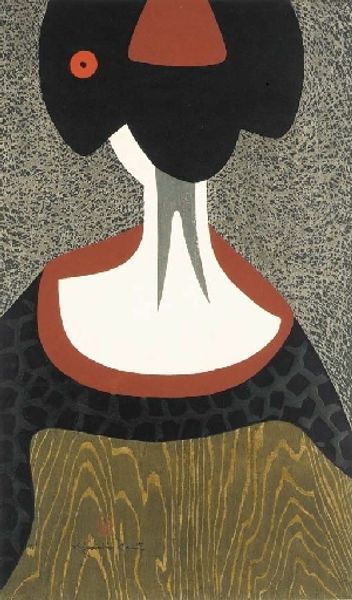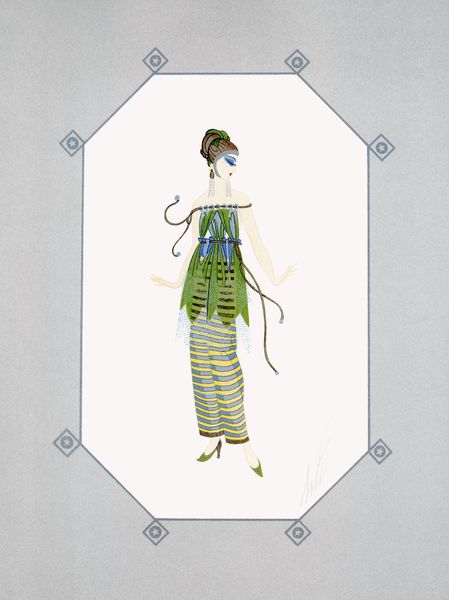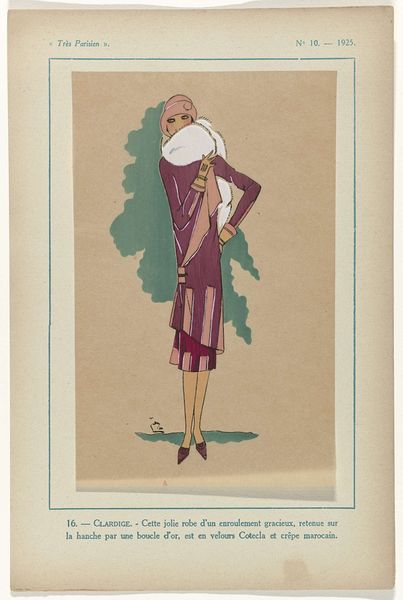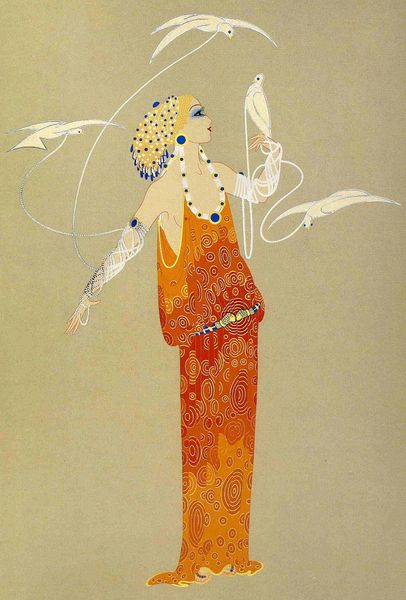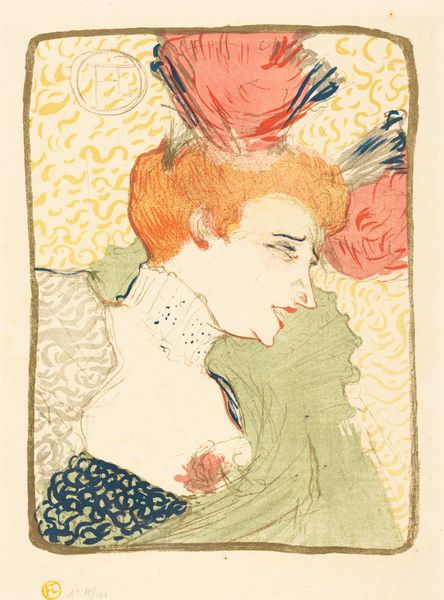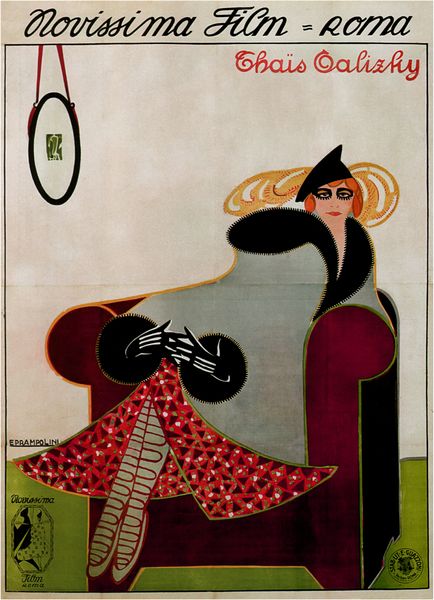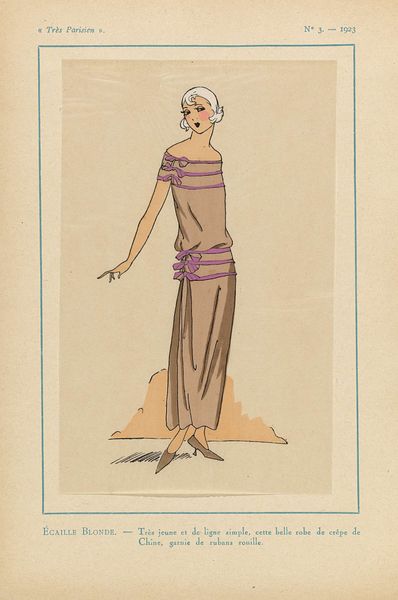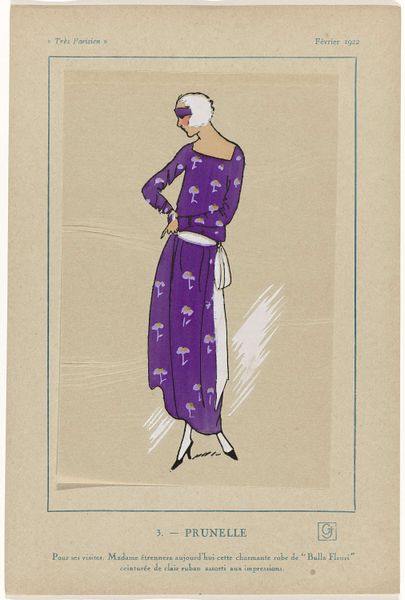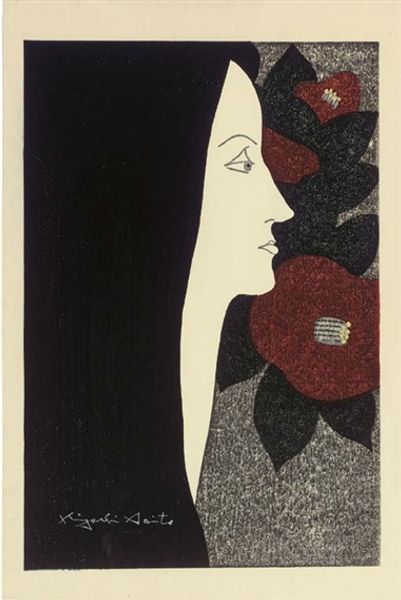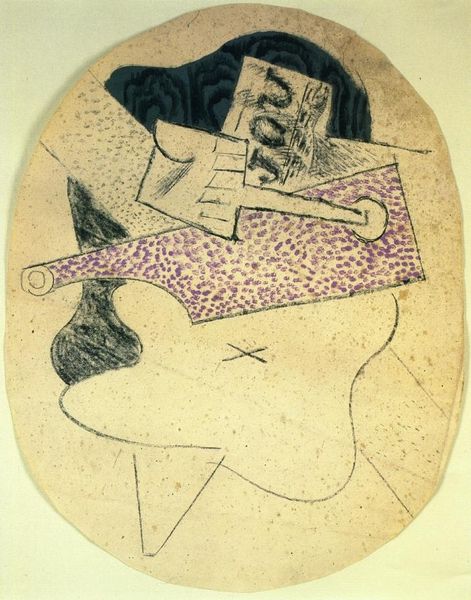
#
art-deco
#
head
#
figuration
#
form
#
line
#
watercolour illustration
#
decorative-art
Copyright: Erte,Fair Use
Curator: "Carnations", from the artist known as Erté. What's striking to you about it? Editor: The controlled, precise lines; it feels… delicate and distant. Like a memory of a flapper filtered through perfumed cigarette smoke. It feels almost haunting, actually, yet so intentionally stylized. Curator: The Art Deco movement absolutely adored this aesthetic of refined elegance. The Roaring Twenties saw rapid shifts in social conventions, gender roles, and new consumer culture with an influx of depictions of sophisticated modern women who enjoyed all things beautiful. Editor: It is beautiful, but the stylization flattens her. The absence of background beyond the subtle texture flattens the figure, the perfect symmetry and rendering feels detached from anything organic. Was it intentional or just another version of patriarchal control? Curator: I think you’re hitting on one of the key tensions of Art Deco. The idealized woman was both empowered and constrained by her image. She embraced newfound freedoms yet remained a carefully constructed ideal viewed in this instance through the lens of fashion and consumerism. Consider Erté's extensive work in magazines like Harper's Bazaar –he practically defined the visual vocabulary for a generation of women aspiring toward glamour. Editor: I suppose there is an irony there. Art Deco imagery was often a kind of propaganda to both project and domesticate the image of an autonomous women who now faced competing demands for their bodies in social, public, and commercial space. It both creates a new empowered image, while simultaneously exploiting the anxieties that come with the shifting female experience of the 1920's. Curator: Exactly. Even the carnations themselves become symbols within this narrative – their bold color a challenge to the muted palette of the rest of the piece, adding an element of playful subversion to what might otherwise feel static or overly ornamental. Editor: So Erté captures the duality of female freedom – floral, beautiful, elegant, ornamental yet still an echo of anxiety? That is the tight rope of existing in the public eye even now, especially for women. Curator: Absolutely, Erté's works continue to provoke, prompting questions about art's role in mirroring society and simultaneously shaping perceptions of beauty and identity. Editor: Well, it’s given me plenty to consider about who has access to public life and on whose terms, both then and now. Thanks for illuminating that.
Comments
No comments
Be the first to comment and join the conversation on the ultimate creative platform.
